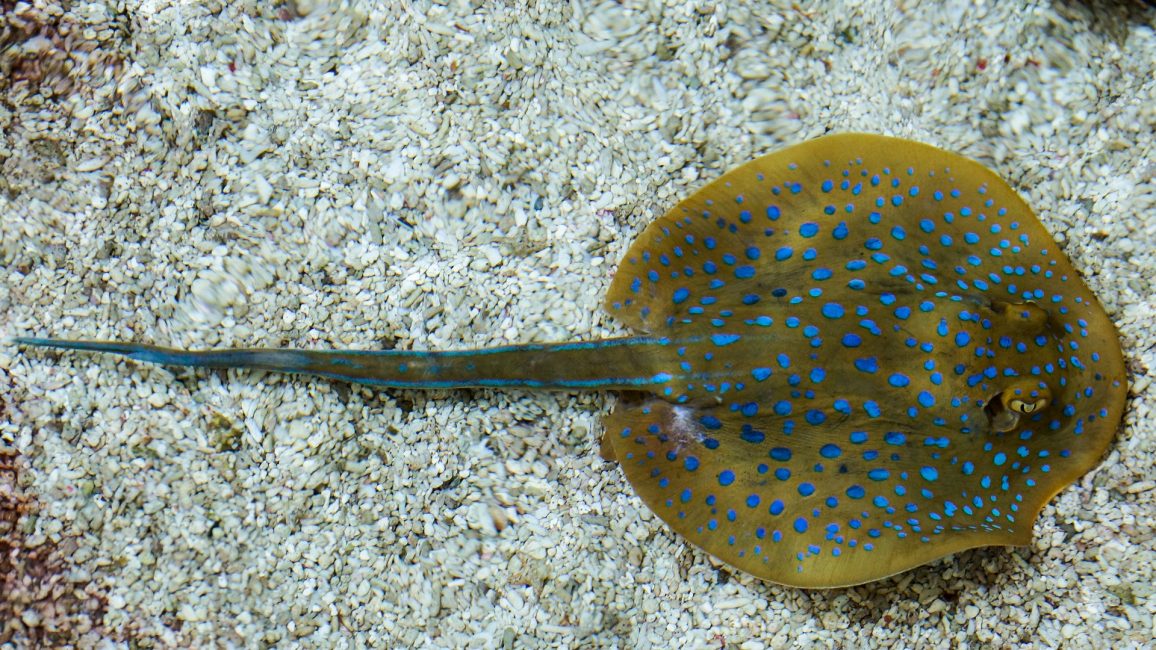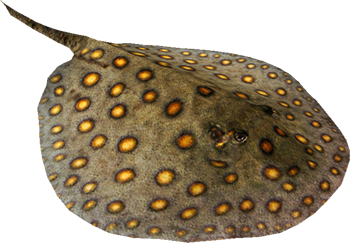
Stingray Stings by Cathy Cumberland, M.D.
 Well it is still time for surf, sand, sun, and… Stingrays! Our southern beaches are home for thousands of Round Rays. Seal Beach itself has more than 400 stingray injuries per year and populated by nearly 20,000 rays. Stingrays also love Santa Monica, Newport Beach and are numerous all the way down to San Diego. They are mild-mannered and shy little guys that are the size of dinner plates. They hide in the sand from predators (sharks and seals) and prefer the shallow warm water. They lay there quietly minding their own business until they get stepped on by an inadvertent bather and… BAM! Stingrays have an inch-long barb filled with venom shoots that out and stabs a foot or ankle. The barb can cause a significant laceration and can break off into the wound. Immediately the victim feels an excruciating pain which quickly starts to spread up the injured limb.
Well it is still time for surf, sand, sun, and… Stingrays! Our southern beaches are home for thousands of Round Rays. Seal Beach itself has more than 400 stingray injuries per year and populated by nearly 20,000 rays. Stingrays also love Santa Monica, Newport Beach and are numerous all the way down to San Diego. They are mild-mannered and shy little guys that are the size of dinner plates. They hide in the sand from predators (sharks and seals) and prefer the shallow warm water. They lay there quietly minding their own business until they get stepped on by an inadvertent bather and… BAM! Stingrays have an inch-long barb filled with venom shoots that out and stabs a foot or ankle. The barb can cause a significant laceration and can break off into the wound. Immediately the victim feels an excruciating pain which quickly starts to spread up the injured limb.
 Most people don’t know what hit them until they are seen by the lifeguards hopping out of the water in a panic. Fortunately, most of our local lifeguard’s stations are equipped with immersion tanks filled with hot water. Soaking the limb immediately with water as hot as one can stand (113 degrees F) neutralizes the venom but may take 60 to 90 minutes to do the job thoroughly.
Most people don’t know what hit them until they are seen by the lifeguards hopping out of the water in a panic. Fortunately, most of our local lifeguard’s stations are equipped with immersion tanks filled with hot water. Soaking the limb immediately with water as hot as one can stand (113 degrees F) neutralizes the venom but may take 60 to 90 minutes to do the job thoroughly.
Any victim of stingray wounds should seek medical care as soon as possible after the pain is controlled with hot water treatment. Whether or not barb fragments are seen in the wound, an X-ray should be obtained to visualize any deep fragments below the skin. The wound should be irrigated well. The doctor can inject local anesthesia to help with pain relief and facilitate barb removal. Tetanus vaccine should be given if needed. Everyone needs antibiotics to prevent nasty infections from ocean bacteria as well as skin staph and strep bacteria. Most wounds will be sore for a few days but the initial venom-induced pain can only be relieved by hot water immersion, so obtain that treatment any possible way that you can right away.
How to avoid sting ray wounds? Don’t think that surf booties or other footwear will help. Barbs can penetrate even thick leather boots. Do the “stingray shuffle” when entering the water and stir up the sand well. Make sure they know you are “in the house!” If you are fishing and catch a ray, cut the line before they can get you in the hand, arm, or worse- the torso. Venom injected above the waist can be deadly. Rays are flexible and can direct that barb all the way over their heads in defense.
So be careful, watchful, and shuffle those feet when entering the ocean this season and everyone will have fun in the sun!
The information provided is for general interest only and should not be misconstrued as a diagnosis, prognosis or treatment recommendation. This information does not in any way constitute the practice of medicine, or any other health care profession. Readers are directed to consult their health care provider regarding their specific health situation. Marque Medical is not liable for any action taken by a reader based upon this information.
